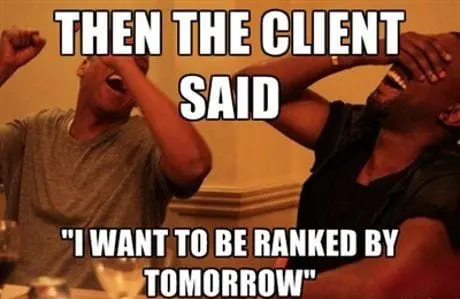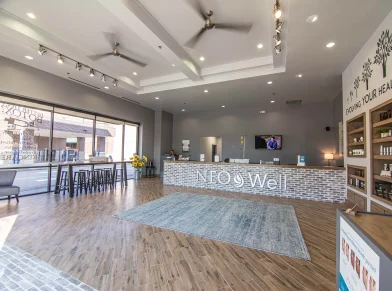WHAT SEO CAN TEACH PR AND WHAT PR CAN TEACH SEO

The impending extinction of public relations due to SEO and the looming death of SEO at the hands of public relations were gripping topics in 2014, no matter which side of the fence you found yourself on.
Searches for ‘Is public relations the new SEO?’ and ‘Is SEO the new public relations?’ were roughly parallel at 1.5 to nearly 1.6 million results. All riveting questions, especially since they were premised on intelligent musings and coached in respectful dialogue. Well, most of the time.

As a PR person thrown into the deep end of the SEO pool this year, experience has shown that nobody will be replacing anyone anytime soon. SEO and PR will not only continue to co-exist, they will be elemental to each other’s survival. And they still have a lot to learn from each other about how their roles can evolve.
What SEO can teach PR
Apart from the fact that NAP does not mean a quick snooze (it’s the SEO acronym for name-address-phone number) and that citations are not traffic violations, there are a few useful lessons PR people can learn from SEO, if only to avoid the one constant irritant in our lives:
Quantifying our efforts.

The following will sound dismally familiar to every PR person, especially in-house hacks:
When introduced, you are described as ‘the girl who handles our Facebook.’
You never have enough budget, resources or authority because people think what you do is fluffy, i.e. not deserving of serious investment.
You are at the periphery of strategic planning unless you’re lucky to have a boss or company who recognizes the value that PR brings to the table.
Learning SEO – at a minimum, Google Analytics with all its squiggly blue charts – will teach you:
How to demonstrate tangible ROI
We’ve always been told that there is no hard link between PR and sales. SEO blessedly tells us otherwise.
Every piece of content created with the purpose of driving visitors to a website kick-starts the sales process, whether it’s a press release, a link shared on social media, or advertising creative.
With SEO, you can determine which channels send visitors to your site and what actions they should execute afterwards to qualify them as sales leads. These actions are goals that you can set up via Google Analytics. A goal that is completed is a conversion.
For an e-commerce firm, goals are as straightforward as hitting specific revenue. For a B2B firm selling professional services, relevant goals could be completing and submitting a contact form, downloading a white paper, even making a phone call.
Agree with your boss what type of goals and number of conversions are relevant to your company. And use these are your yardstick in assessing your performance.
If your company’s Facebook page is driving 90% of the traffic to your website, being described as ‘the girl who handles our Facebook’ loses its sting, does it not?
How to create content more efficiently
A huge part of public relations is content. Writing blog posts, posting on social media, creating corporate videos — it never ends. This is the reason behind the popular notion that journalists make good publicists, a controversial topic that needs delving into some other time.
What comes as a rude surprise is how much of this content goes to waste, mostly because there’s a flood of stuff out there competing for shrinking attentions and increasingly jaded appetites.
Knowing SEO gives PRs a leg up by a) determining content that has historically performed well (BuzzSumo is really helpful), b) using keywords that help content rank higher on search engines (Google Webmaster tools) and c) knowing who to pitch because they’ve covered the subject before (thank you, ahrefs).
Google Analytics will tell you what pages of your website are most visited and dwelt upon, what blog posts delivered and which didn’t. Want to check out what’s working for the competition? Look them up on Majestic SEO or SpyFu.
Knowing what works and gets the most response is more productive than dedicating six hours of your day waxing lyrical on a blog post that no one will read.
How to have the final word on creative decisions
Exhausted PR people who tussle constantly with clients over branding and design decisions should take a leaf from the SEO playbook: Facts win the day. Facts trump opinion every single time.
Is your client insisting on the stupidest brand name ever because it was their pet idea? Gently remind them smart keyword use is critical to any naming protocol, since the brand needs to be found by its customers online.
Does your boss want animation on each web page? Point out that site loading speeds are a Google ranking factor and too many page elements dilute the call to action.
Is your client too obsessed with getting social media followers? Furnish stats that her Pinterest board is driving 1% of traffic to her site and watch her focus magically shift.
The wonderful thing about SEO is that what PR people have known intuitively all along can be backed up with facts. Facts which even the most combative client cannot ignore.
Having said that, PR people’s tribal knowledge is the right brain to SEO’s left brain, the butter to their toast.
It may just be possible that SEO is the new public relations, but only if SEO learns a skill PRs have that just can’t be hacked, despite every black hat tip in the world.
Influence.
What PR can teach SEO
Working at an SEO agency and managing SEO clients brings to light the significant overlap PR has with SEO in terms of objectives, and the marked differences in rationale and solution.
Both, for example, think getting a link from the New York Times is the Holy Grail: SEOs because the New York Times has high page rank and domain authority, PRs because well, everyone reads the New York Times. Both are right.
And how does one get a link on the New York Times? To an SEO, this is what’s involved:

PRs know that not everything can be won from behind a laptop. There’s in-person or phone pitching (what separates the men from the boys); introductions through connections; networking and events.
After all, this is how PR managed to do great stuff in the Jurassic years without the Internet.
And it’s where PR can teach SEO a thing (or three), like:
How to build influence, not just links
Any PR worth his or her salt can teach you how to identify stakeholders beyond visitors to the site and how to customize channels, approach and messaging for each audience — not all of which are are best done online.
This is a massive step beyond SEO’s approach of combing online tools for backlinks to competitors’ sites, which is a reactive practice.
A PR’s job is to create bonds with all publics – from employees to management to shareholders, media and the community — and to maintain these bonds. Strong relationships will sustain your online and offline presence even through the tenth Penguin update. Strong relationships mean you are considered early in the creative process, not afterwards.
How to write for Google
Not too long ago SEO was about keyword stuffing; Panda took care of that. Google now demands high-quality content, writing for actual reading, because — shock, horror — real people read websites, and they won’t frequent a site with poor content.
To SEOs, this was a revelation; to public relations practitioners, this was like saying the sea is wet. PRs have been delivering high-quality content long before Google was around because their jobs depended on it.
Here’s the litmus test: Try pitching a story to a journalist. Even better, do it on the phone. You’ll soon get what quality content is — it’s the story that didn’t get you yelled at or hung up on.
Public relations people are initiated into this practice early in their careers. They learn that to get coverage, you have to provide value. Who better than they to determine whether your content is up to par?
Other best practices on quality content that PRs can teach SEO:
How to craft a winning lede (not a misspelling) and structure copy flow to entice readers to stay on the story and, by virtue of that, stay longer on the site. (Hopefully causing bounce rates to fall.)
How to make your content work harder: Public relations people have dozens of ideas on how to recycle content into other formats, e.g. turning a blog post into a slide show, an infographic, a video, a podcast, a quiz.
How to get people to interact with your content: PR experts can teach you how to strike the right note to invite comments, encourage conversation, and increase the likelihood of sharing.
In public relations every action — writing, events, media relations — plays a part in a complex mise en scène. And this macro view yields the best lesson SEO can learn from PR:
How to stay relevant long after the job is done
SEOs know whereof I speak: There comes a time when everything is done for a client.
The site is as optimized as it can get. The content and performance are solid. The competition doesn’t even come close in rankings, keywords, links and traffic. It gets harder and harder each month to justify your fees.
Unless you go beyond what is expected of you. One of the biggest frustrations for SEO is clients’ assumption that SEO is tactical, that it is merely a means to an end.

As much as PR is somewhat responsible for its fluffy reputation because of its slowness in embracing quantification, so does SEO not help its tactical image by focusing on, and sweating the small stuff.
What we do in SEO is so much more than driving traffic to a site, getting penalties revoked or doing local citation bursts. There is a higher purpose to SEO that tragically gets buried under the incessant rabbiting of DA, PA and other acronyms that are gibberish to a client and the refusal to look outside of Moz and the search engine world to create context for what we do.
Not to mention what we can do. Has SEO even thought about the potential that lies in providing crisis management services?
SEO’s challenge is to confidently claim its spot in the bigger marketing picture by thinking bigger of what it does and to communicate its value in language everyone understands. In short, it needs PR before it thinks of taking over PR.
For the reasons above, practitioners in both industries can climb down from the parapet. Thanks to each other, both PR and SEO have never looked as promising, exciting and further from death than they do now, 10 days away from a new year.






















